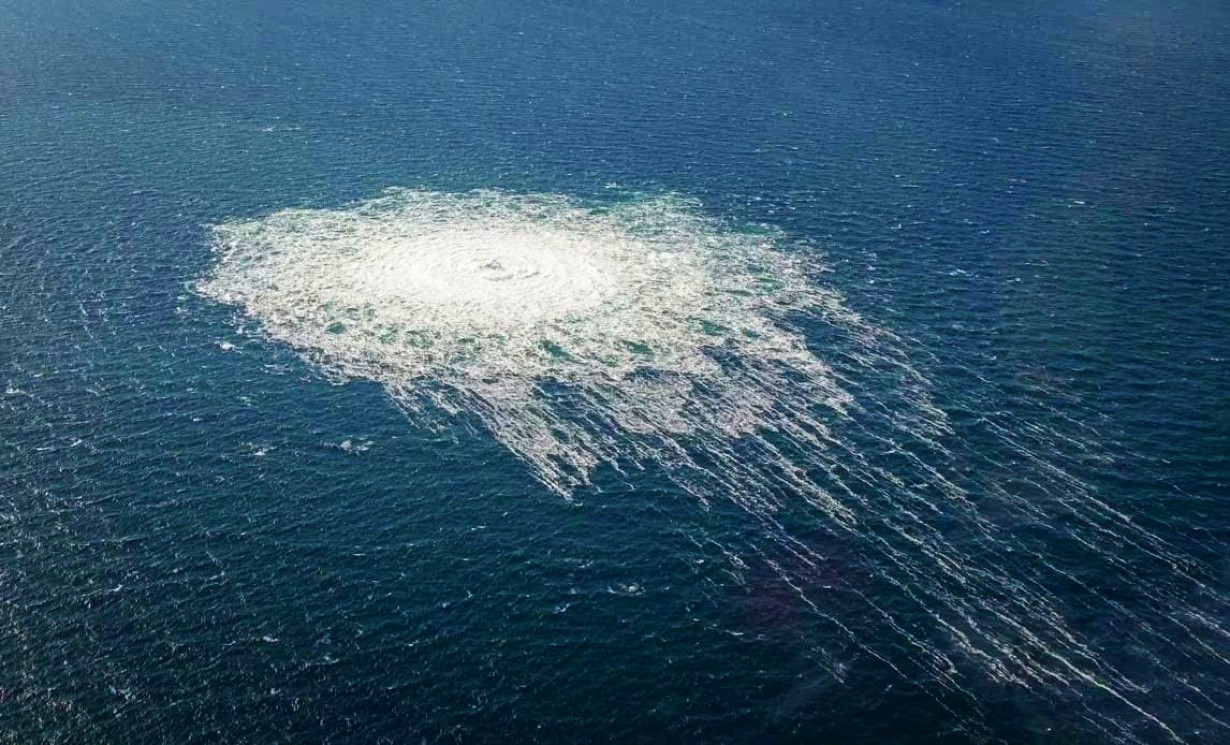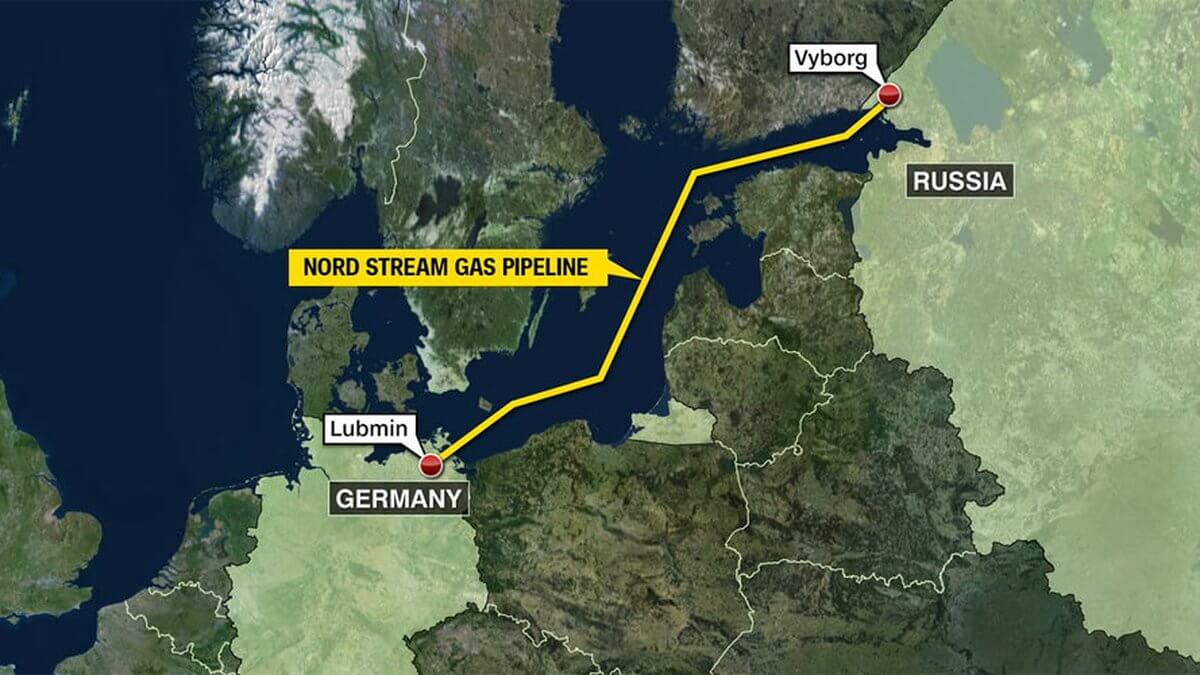Is the Biden Administration creating panic over four flying objects downed above the United States and Canada to distract global opinion from its possible role in the major sabotage of the Nord stream blast last September?
“Yes,” says the former US National Security Agency (NSA) contractor Edward Snowden. The controversial whistleblower, who was behind the biggest intelligence leak in the NSA’s history, insists that the panic over the possible alien or extraterrestrial origin of flying objects downed above the United States and Canada is designed to distract journalists from investigating Nord Stream pipeline blasts.
Coming as it did directly after Pulitzer Prize-winning investigative journalist Seymour Hersh claimed in his blog that last year’s bombing of the Nord Stream underwater gas pipelines in the Baltic Sea was a covert operation ordered by US President Joe Biden and carried out by the CIA, Snowden now has revived the debate in strategic circles all over the world over the American “designs” in the war in Ukraine.
After all, Hersh is not an ordinary journalist and is widely regarded as a professional legend.
Predictably, while the White House, the Department of the State, the Pentagon, and the CIA have firmly rejected Hersh’s claim by describing it as “utterly false and complete fiction,” Moscow has taken it seriously and termed it “remarkable.”
Hersh does not seem to be impressed by the Biden Administration’s rejection of the story he published on February 8. In a subsequent interview, the celebrated journalist noted that major news outlets failed to report many things about the ongoing conflict between Moscow and Kyiv.
“The war I know about is not the war you are reading about,” Hersh observed, adding, “It is amazing to me how they feel in line, my colleagues.”
By “colleagues,” he meant the journalists in the leading American publications. He lamented how “many outlets such as the New York Times, Washington Post, CNN, and MSN have become a front for the White House and the Biden Administration.”
As for the Nord Stream expose, Hersh insisted it was “not a hard story to find” and that it is evident that some NATO country was involved, especially after top US officials, including President Joe Biden, issued clear threats that the Russian-German project would be stopped “one way or another” if Moscow chose to send troops to Ukraine back in February 2022.

Hersh also pointed out in the interview that the entire international pipeline industry knew “who did what” and that this was a reality that “nobody thinks about ….But I did, so there you are.”
Key Points
What are Hersh’s findings in his report, which, incidentally, no US publication agreed to carry, compelling him to publish it in about 5000 words in his blog? Its key points are:
- US Navy divers planted explosive devices beneath Russia’s Nord Stream 2 gas pipeline in June 2022, and three months later, the explosives destroyed three of the four Nord Stream pipelines.
- The operation was disguised under the widely publicized mid-summer NATO exercise known as Baltic Operations 22 or BALTOPS 22, conducted in June off the coast of Germany. It involved vessels from 14 NATO member states and took place in the Baltic between June 5 and 17, 2022.
- US President Joe Biden decided to attack the pipelines after nine months of discussions with senior officials. “Biden’s decision to sabotage the pipelines came after more than nine months of highly secret back and forth debate inside Washington’s national security community about how to best achieve that goal,” Hersh said in the report citing an anonymous source with knowledge of the planning.
- The motivation for the attack was a simple political calculation. “With Russian troops massing on the Ukrainian border and the bloodiest war in Europe since 1945 looming,” Hersh wrote, “President Joseph Biden saw the pipelines as a vehicle for Vladimir Putin to weaponize natural gas for his political and territorial ambitions.”
- On September 26, 2022, a Norwegian Navy P8 surveillance plane released the sonar buoy during a routine flight. The signal from the buoy spread underwater, initially to Nord Stream 2 and then to Nord Stream 1, and a few hours later, the high-powered C4 explosives were triggered. The attack on the Nord Stream 1 and 2 pipelines destroyed civilian infrastructure of over $20 billion and resulted in the single largest methane gas spill in human history. About 14.6 million tons of CO2 was released into the sea, with a significant climate impact. The attack also contributed to a spike in energy prices throughout Europe and the entire world
- The blasts occurred in the exclusive economic zones of Sweden and Denmark. Both countries have concluded the pipelines were blown up deliberately but have not said who might be responsible.
- In the aftermath of the incident, “Russia was repeatedly cited as a likely culprit, spurred on by calculated leaks from the White House—but without ever establishing a clear motive for such an act of self-sabotage, beyond simple retribution.” On the other hand, Hersh quoted US Secretary of State Antony Blinken, who discussed the bombing with the media and described it as an opportunity for the European countries to reduce their dependence on Russian energy.
“It’s a tremendous opportunity to once and for all remove the dependence on Russian energy and thus to take away from Vladimir Putin the weaponization of energy as a means of advancing his imperial designs,” Blinken said.
“That’s very significant, and that offers a tremendous strategic opportunity for the years to come, but meanwhile, we’re determined to do everything we possibly can to make sure citizens do not bear the consequences of all of this in our countries or, for that matter, around the world.”
Why Would Russia Destroy Its Own Pipelines?
It may be noted that Nord Stream 1 and 2 pipelines in the Baltic Sea carried gas from Russia to Europe. Nord Stream 1 was completed in 2011, while work for Nord Stream 2 began in 2018, following the same track around Bornholm Island (the lines are next to each other) and was completed in September 2021.
The two lines were built by the Russians and are primarily owned by them. They must have spent billions of dollars in constructing them. Gazprom, the state-owned Russian firm, has a majority stake in the pipelines.

Incidentally, some of Hersh’s points were raised in a piece by The EurAsian Times on October 11, 2022. We had written, “Concerning the theory that a Russian underwater drone hit the pipelines and caused the leak, available literature suggests that it is doubtful, given the Nord Streams’ proven strength.
“The steel pipe has a wall of 4.1 centimeters (1.6 inches) and is coated with another 6-11 cm of steel-reinforced concrete. Each section of the pipe weighs 11 tons, which goes to 24-25 tons after the concrete is applied.
“Besides, the Baltic Seas have been under the strictest control of NATO since last June. It is to be noted that under the leadership of the US Sixth Fleet, the NATO navies conducted a very powerful “BALTOPS 22 maneuver” in June and July.
“Now, with the Baltic Sea under total control of NATO, whose navies had energized themselves so well in a mammoth exercise that lasted nearly two months, could the Russian underwater drone, allegedly damaging the pipelines, have remained undetected?
And that too, when an expeditionary detachment of US Navy ships led by the universal amphibious assault ship USS Kearsarge was in the Baltic Sea, just 30 kilometers from the site of the alleged sabotage on the Nord Stream-1 gas pipeline and 50 kilometers from the threads of Nord Stream-2 gas pipeline?”
The EurAsian Times story also mentioned one video clip on ABC News of President Biden saying: “If Russia invades, that means tanks or troops crossing the border of Ukraine again, then there will no longer be a Nord Stream 2. We will bring an end to it.”
Coming to Hersh’s revelation, critics say that it should not be taken seriously as it relies heavily on a single source within the US government who provided details of the deliberations behind the decision and the attack itself.
“That Hersh could not find a publisher for his explosive Nord Stream 2 story suggests that he has lost the confidence of the journalistic and editorial communities, communities that worshipped Hersh for decades”, says Dr. Robert Farley, an author of many military books.
While Hersh’s critics add that he has authored great revealing works on cover-up by the Pentagon during the Vietnam war (he was also among the first to investigate Richard Nixon’s secret and illegal bombing of Cambodia), the Abu Ghraib prison scandal and his book “The Price of Power: Kissinger in the Nixon White House” is one of the classics, some of his recent claims about the US government’s account of the killing of Osama bin Laden (he says that Osama was handed over to America by Pakistan) and the use of chemical weapons in the Syrian civil war evoked poor response.
The same will be the case with his recent claim, so runs the argument.
But then, many questions remain. Who sabotaged the pipelines? Why would Russia destroy the pipelines that filled the country’s coffers? And who has benefited the most after the destruction of the pipelines?
Who has gained by taking Germany away from the Russian gas, which was fuelling Germany’s booming industries and business (replacement natural gas provided by American suppliers costs four to five times more than that from Russia)?
There are “separate investigations” that Germany has launched, Denmark, and Sweden into the suspected sabotage, with German media reporting “trust issues” among the three EU nations.
While Denmark and Sweden have barred Russian inputs in their investigations (Russian Foreign Minister Sergey Lavrov said this exclusion highlighted the West’s double standards), German Attorney General Peter Frank has said that their investigators probing the explosions do not have any evidence at hand proving that Russia is behind the catastrophic blasts.
In such a situation, even if prejudiced, Hersh’s claims cannot be wished away, at least for some time.
- Author and veteran journalist Prakash Nanda has been commenting on politics, foreign policy, on strategic affairs for nearly three decades. A former National Fellow of the Indian Council for Historical Research and recipient of the Seoul Peace Prize Scholarship, he is also a Distinguished Fellow at the Institute of Peace and Conflict Studies.
- CONTACT: prakash.nanda (at) hotmail.com
- Follow EurAsian Times on Google News




